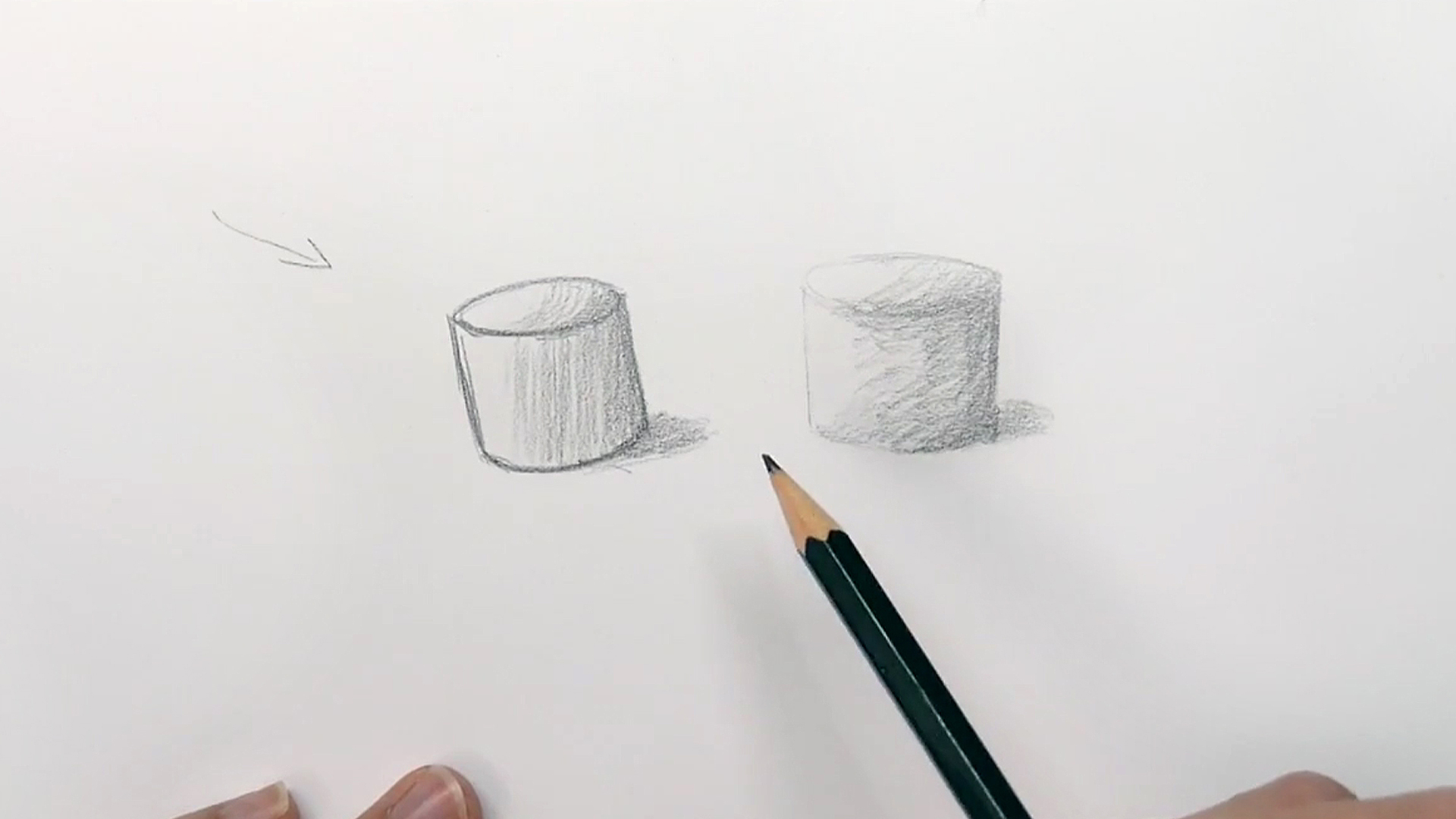Practice Creating Value
Jun 07, 2021
The element of art: Value
Value is one of the elements of art. The elements are line, shape, form, space, texture, value, and color. We cover them all in a series of blogs.
What is Value?
Value is how light or dark a shade is on a scale of white to black. It’s how we understand how something looks around us. The shade helps portray if something is flat or round. Understanding value is easier to understand if you make your own value scale.
You can make your own value scale using graphite pencils. It doesn’t matter which brand you use, just use what you have. Use pencils with different values, look at the numbers written on your pencils. The lightest graphite pencil I use is the 2H and the darkest is the 8B. H stands for hard and B stands for black. The harder the pencil lead is the lighter the pencil and the softer the pencil lead is the darker the pencil. To create a smooth graphite layer it’s easier to shade with a softer pencil lead, that’s why I usually start the shading with the HB or 2B pencil instead of a lighter one like the 2H.
It’s also important to shade with light pressure otherwise you won’t be able to layer over it easily. If you want to darken your value use a darker pencil grade instead of using hard pressure.

Value Scale
We are going to create 8 values. The first box (value) is the white of the paper. If you would be drawing on grey paper you would need to use a white pencil to create the lightest value. For each value, the top half is one layer of shading and the bottom half is two layers of shading with the same pencil. Shade with the side of the tip of the pencil and only apply light pressure. Fill in each box with the different pencils you’ve chosen finishing with black. (to get a really dark layer I use multiple layers of black)
You can cut out your value scale to make it easier to use. Hold the value scale over a reference photo to decide which pencil you’ll need to use for the shading.

Shading Forms
Value is used to create an illusion of depth in your object. When you use different values like highlights, mid-tones, and shadows you can make your object look 3D.
Practice creating the different values by drawing a sphere, a cube, and a cylinder. To make it easier on yourself try using reference photos or objects in your house to use as an example. When you have your example objects, observe where the light falls onto the objects and look at the shadow it creates.
Remember that when you draw an object and shade it, you should not draw ‘hard’ outlines. The outlines will make it look flat and unrealistic. Draw a light sketch and start shading moving away from the point the light falls onto the object. With shading you create edges and not outlines, this will make it look more realistic.

Draw 3 Forms
Use your value scale to help you choose the right shades.
- Circle: Draw a circle and turn it into a sphere by shading it. Add these values: Highlight, mid-tone, core shadow, cast shadow, and reflected light. Looking at the different values you can tell where the light is coming from.
- Square: Draw a square and turn it into a cube by adding the mid-tones, shadows, and highlights. The lines of the cube will need to be drawn with lines that will go towards a vanishing point.
- Cylinder: Start with two ellipses and connect them, to make the cylinder look 3D you’ll also have to draw the highlight, mid-tone, core shadow, cast shadow, and reflected light.
You can learn more about value and shading in the Artistic Journey membership.
In the drawing course, I will teach you all the basic elements of art step by step and give you plenty to practice with. Want to join? Check out the details here.
Emmy
_
Want to read more? Check out the other topics here.
Want to be notified of new blog posts?
Sign up and you'll receive an email when a new blog is posted.
We won't send spam and you can unsubscribe at any time.
